When Lili Shain heard about friend Temma Gentles’ plan to enlist people to cross-stitch the entire Torah, she thought she was “crazy” and that the project would “never work.”
But several years later, a 170-foot-long tapestry, depicting a large part of the Hebrew Scripture, is now on display at the Textile Museum of Canada in Toronto.
You may unsubscribe from any of our newsletters at any time.
More than 1,500 people from almost 30 countries and a variety of faiths worked on the vivid representation of the holy Jewish text.
The ambitious project, started by Gentles, an artist and designer, in 2013, was an effort to connect more women with scripture.
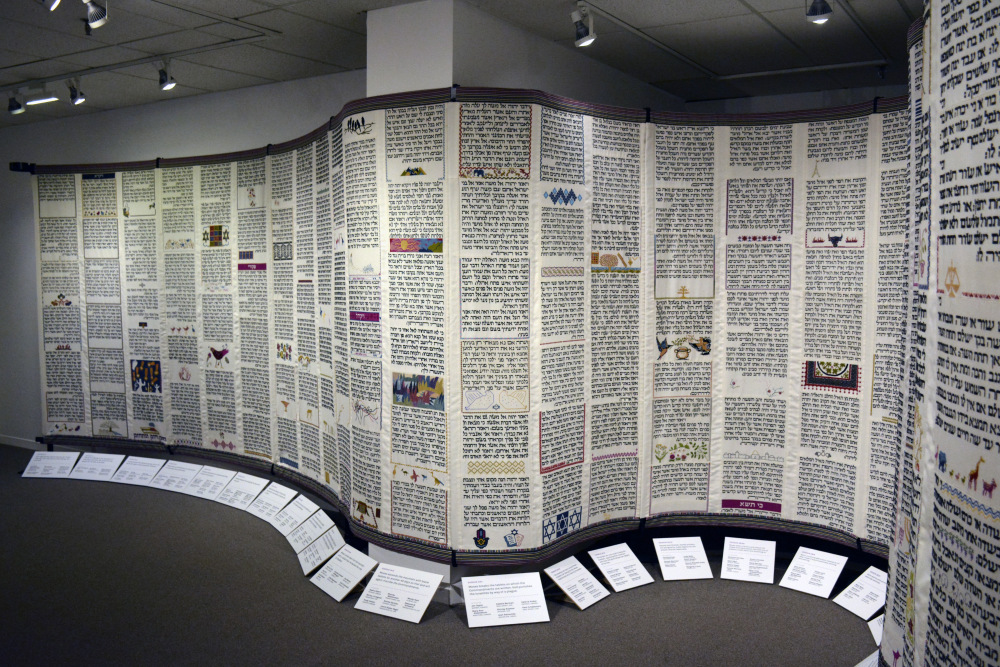
“In most traditions, the calligraphers that write the Torahs and the Quran tend to be men,” said Shain, who chairs the board of directors for the Tapestry of Spirit: The Torah by Stitch by Stitch Project.
She said Gentles chose cross-stitching because it’s a common practice in most cultures. In the Middle Ages, girls would cross-stitch alphabets and numbers and learn to read through the medium of stitchery. “It was a very feminine thing and simple enough that people could learn it,” she said.
Shain was attending Holy Blossom Temple in Toronto with Gentles when she heard about the project. Then, three years ago, when she saw her friend’s drive to recruit stitchers, she volunteered to help.
She also cross-stitched some panels herself. One of her most time-consuming creations belongs to an eight-part illustration of “Let my people go,” a passage that explores Moses and Aaron’s confrontation with Pharaoh.
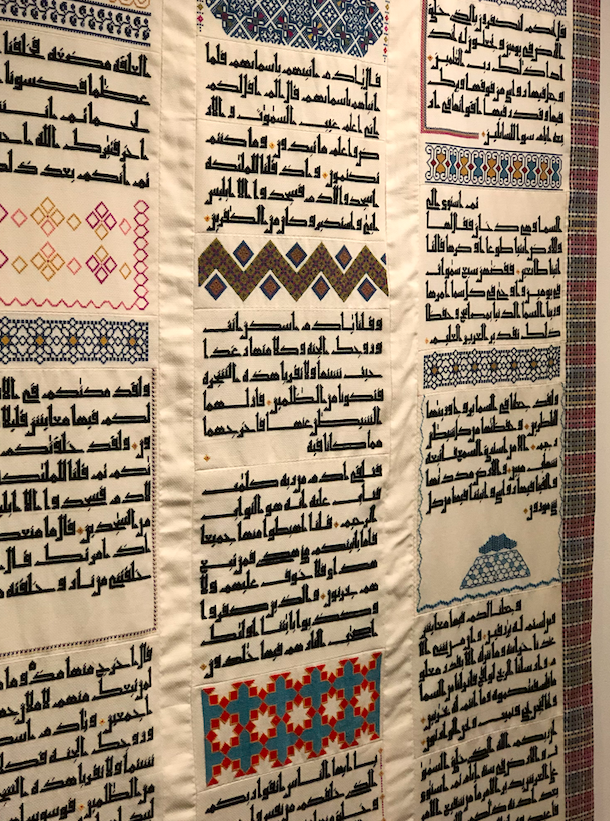
Stitch by Stitch contains 950 panels which include Genesis, Exodus and the last third of Deuteronomy in Hebrew, and two separate pieces from the New Testament in Greek and the Quran in Kufic Arabic.
Panels also include illustrations by the stitchers that depict what certain verses mean to them or anything else the volunteers like. Some include common Torah imagery like birds, pomegranates and Noah’s Ark. Others added designs to commemorate their loved ones, patterns traditional in their countries and even Canadian geese.
More on Broadview: Artist spent 15 years knitting gigantic interfaith tapestries
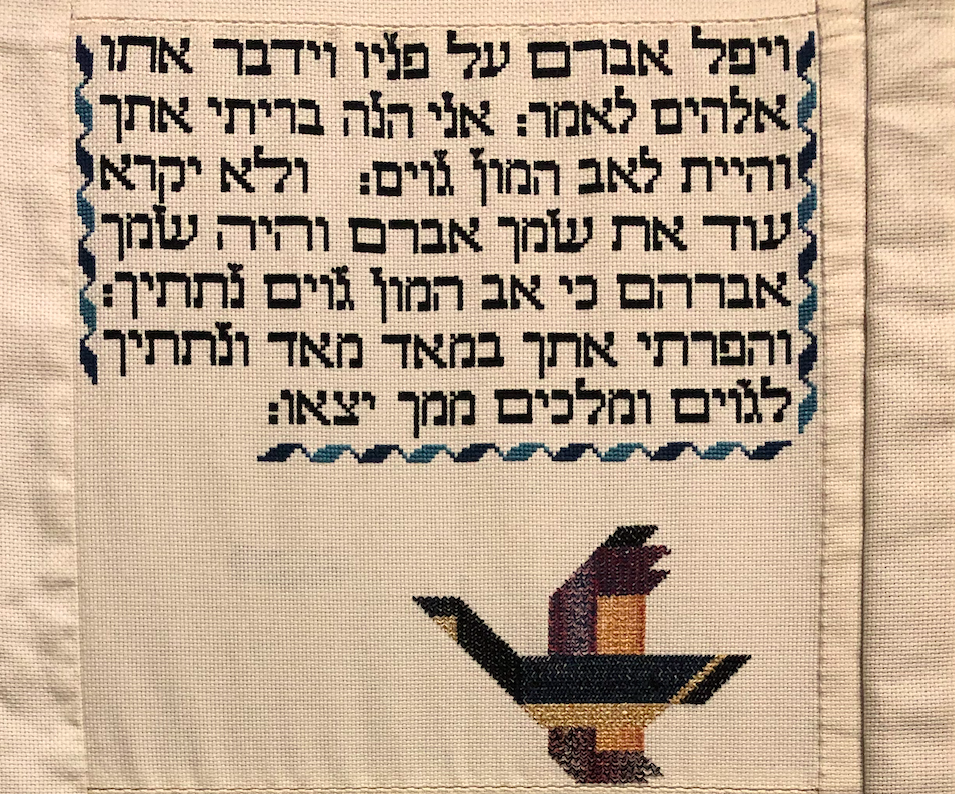
According to Shain, each panel takes around 50 to 100 hours to complete with the illustrations. Stitchers who volunteered to help with the project received a kit with a 14-inch square cloth, a needle and some thread, and the template of the text for $18 to cover the material costs. Participants were also paired with a coach to help them learn how to cross-stitch and ensure the process went smoothly.
Shain said that in addition to people from a variety of faiths and nationalities, men, teens, university students, and a woman in her 90s also helped with the panels.
She said stitchers didn’t have to be Jewish, or know Hebrew or even stitching to be a part of the project. So many people got involved because “[the text] still resonates even if you’re not religious. The stories are iconic and traditional and tie different people together.
The decision to include parts of the New Testament and the Quran was made to try and emphasize the connection between the three Abrahamic faiths.
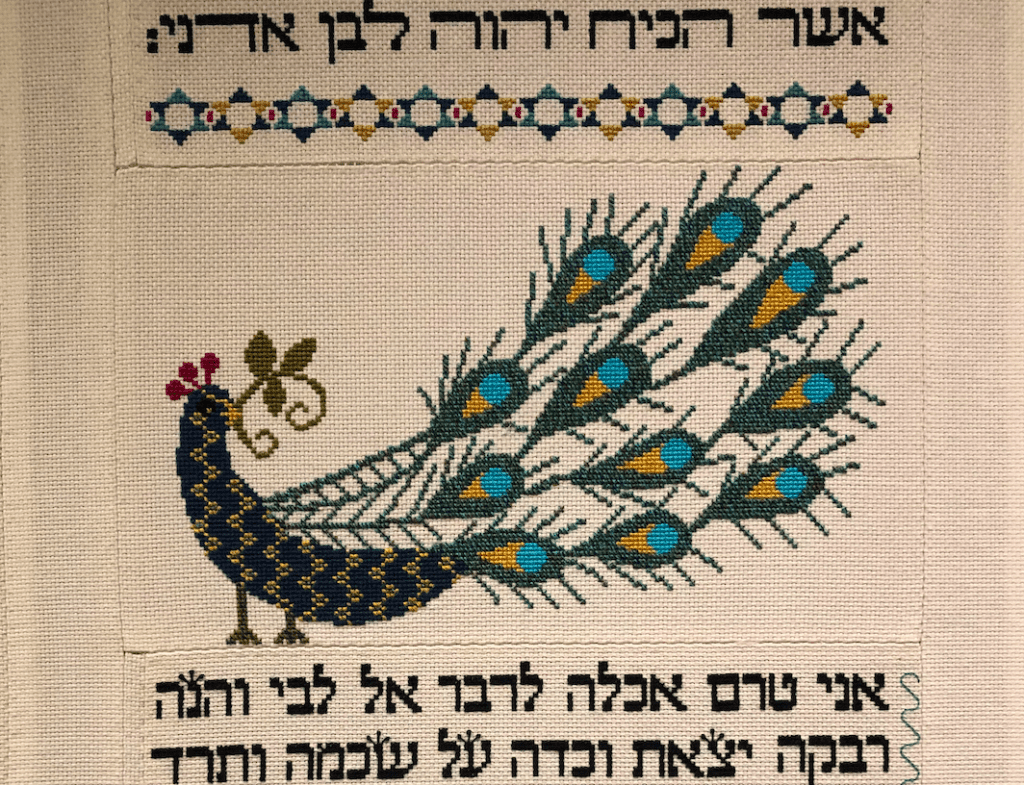
“The foundational story which is what the Torah tells, is part of the other religions. A way to connect and open the eyes of people… who don’t know the characters from the Torah are part of their faiths too,” said Shain.
The exhibit also featured a 15-minute documentary about the project that profiled several of the stitchers from around the world and why they got involved.
More than 200,000 hours were spent on the project, Shain said. The Torah is still missing 30 panels and is expected to be finished by 2021.
The Tapestry of Spirit: The Torah by Stitch by Stitch Project is on display at the Textile Museum of Canada until Nov. 17.
For more of Broadview’s award-winning content, subscribe to the magazine today.

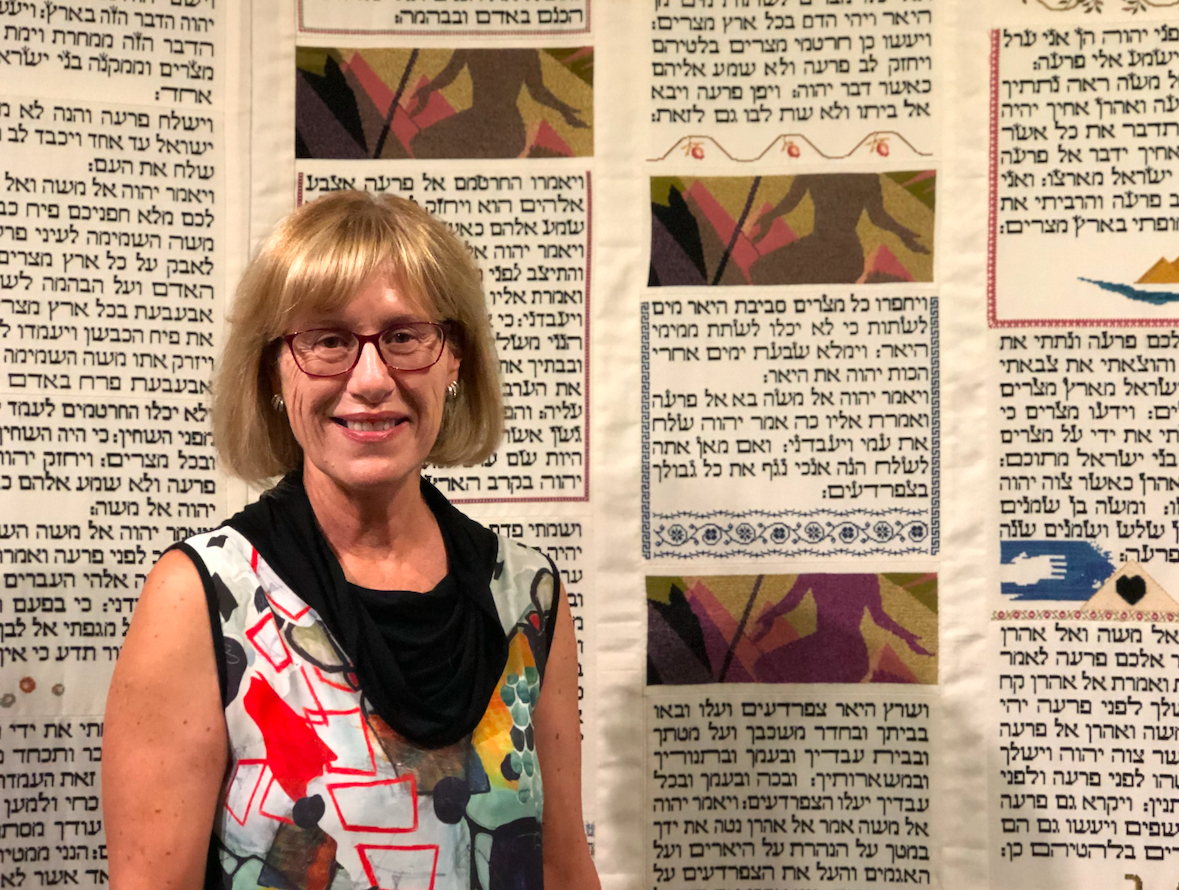







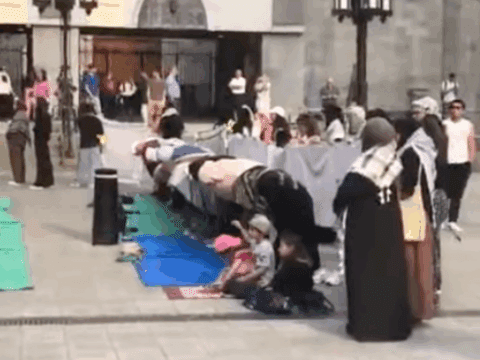



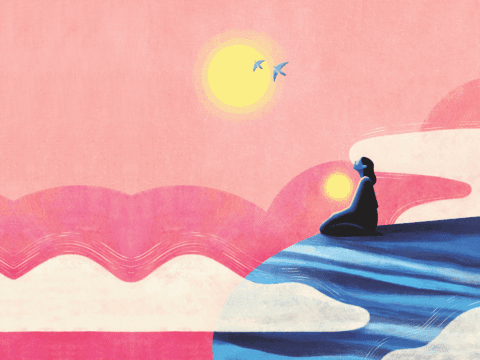
Beautiful, incredible, inspiring, humbling. Thank you to all who made this possible.
Wow This is absolutely wonderful!